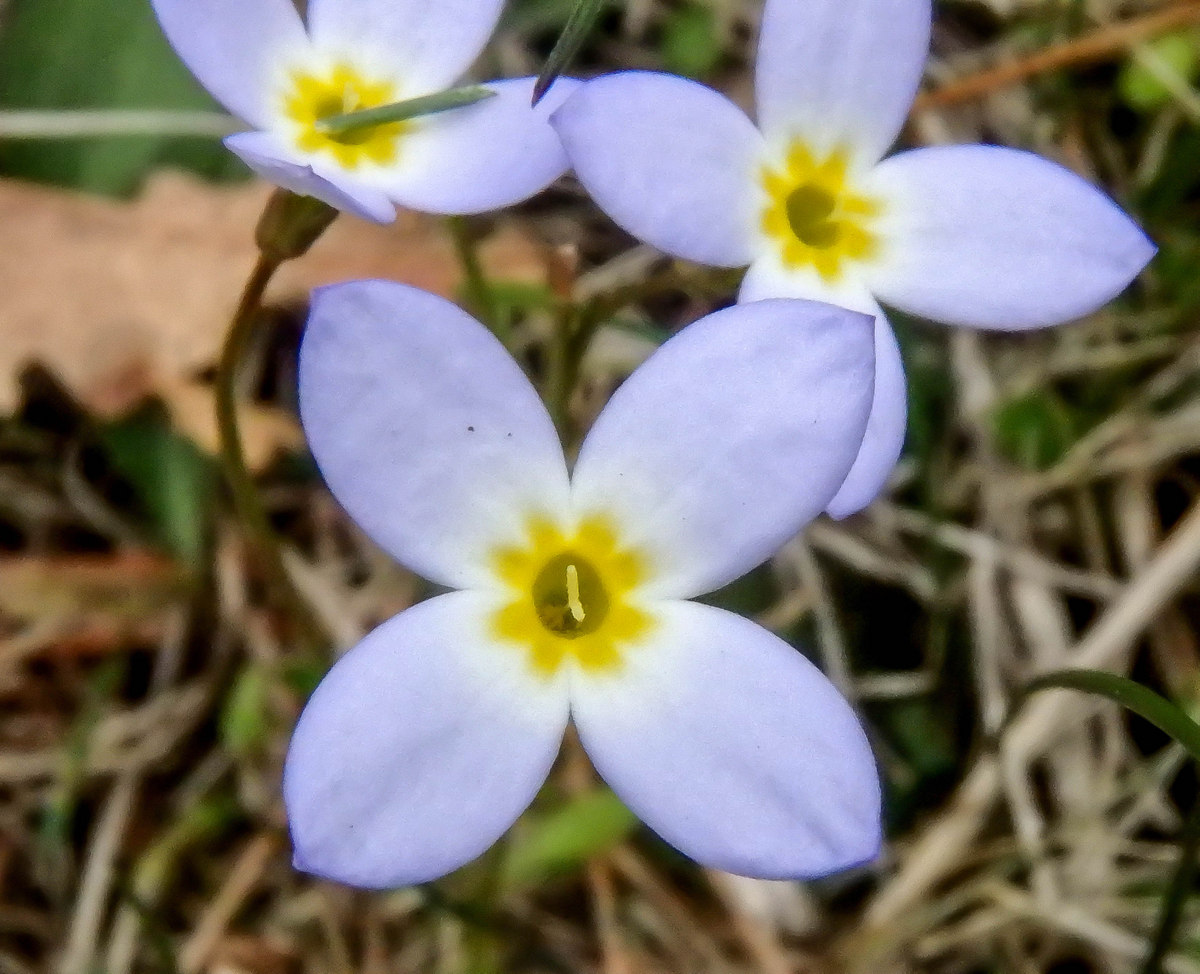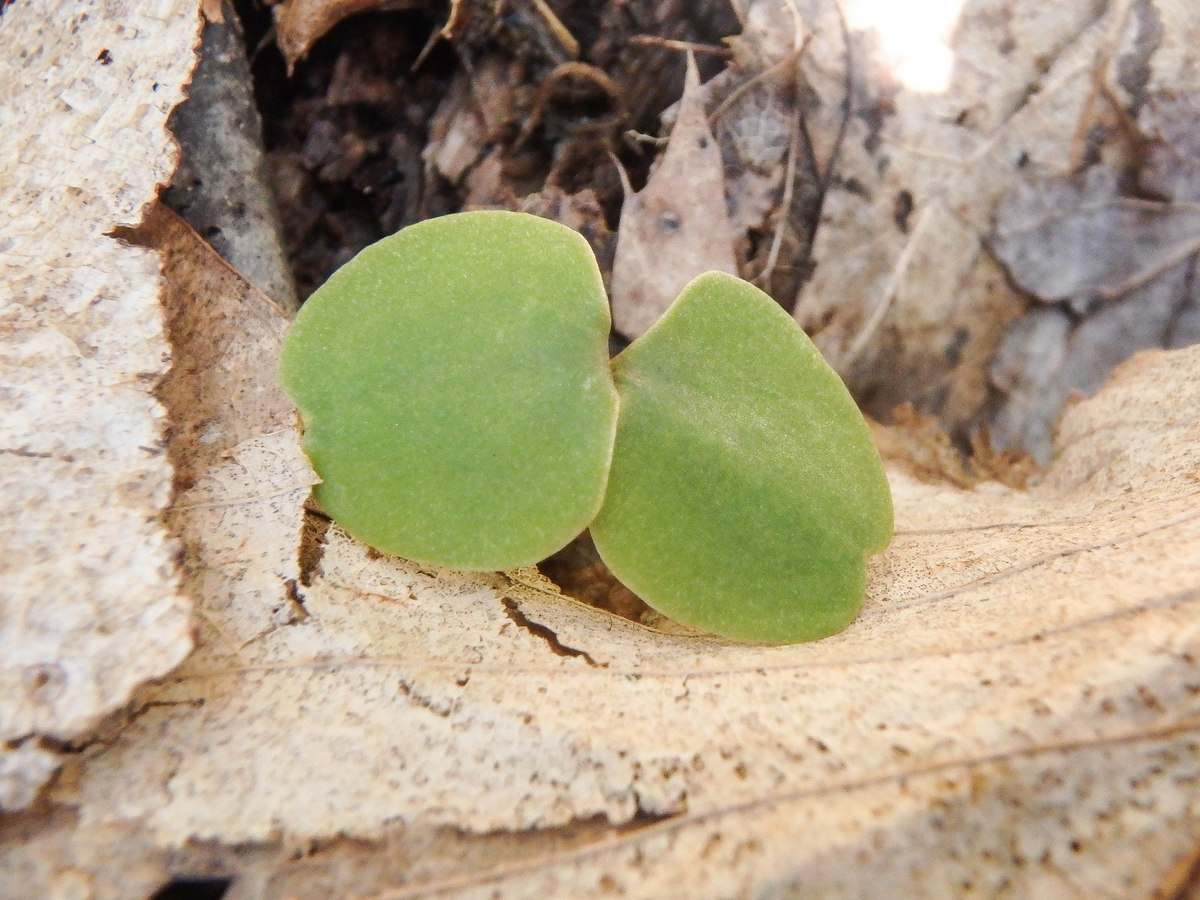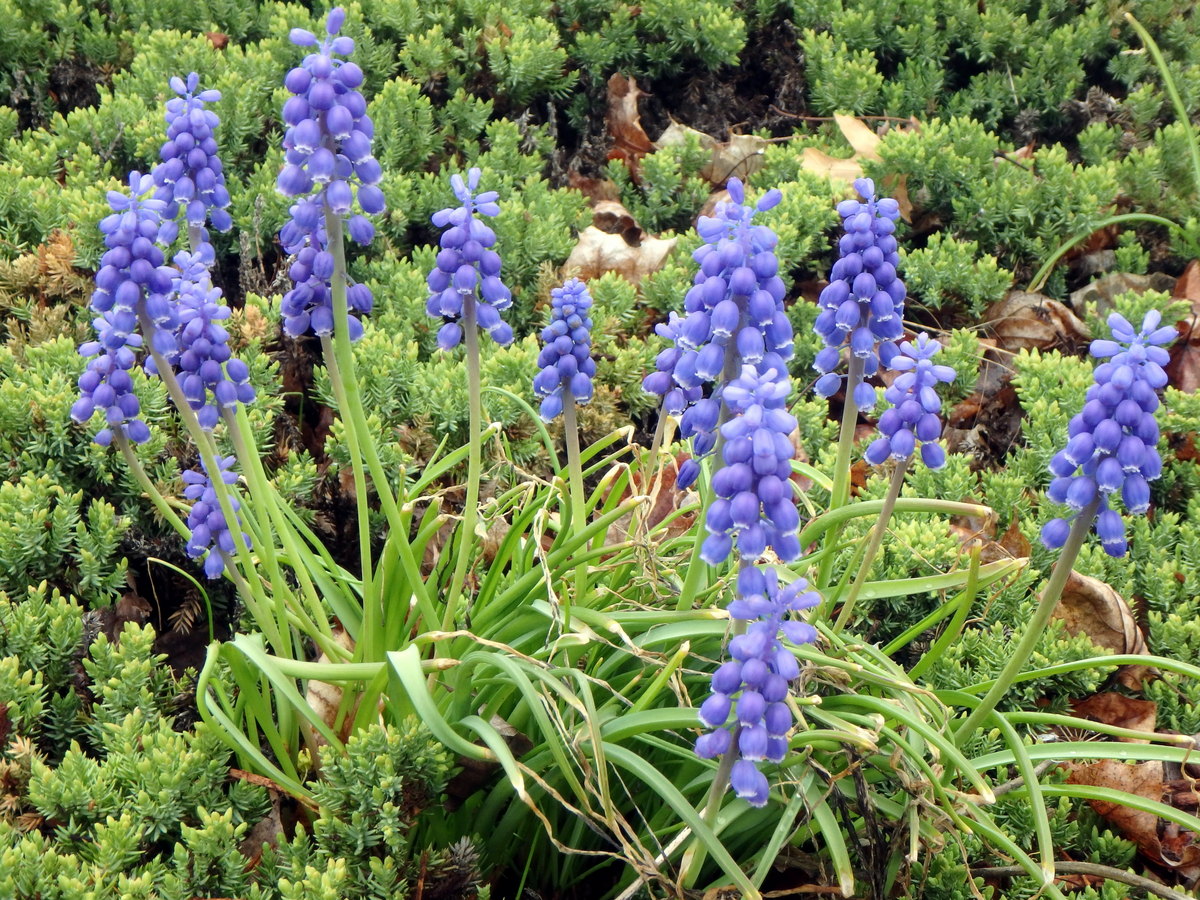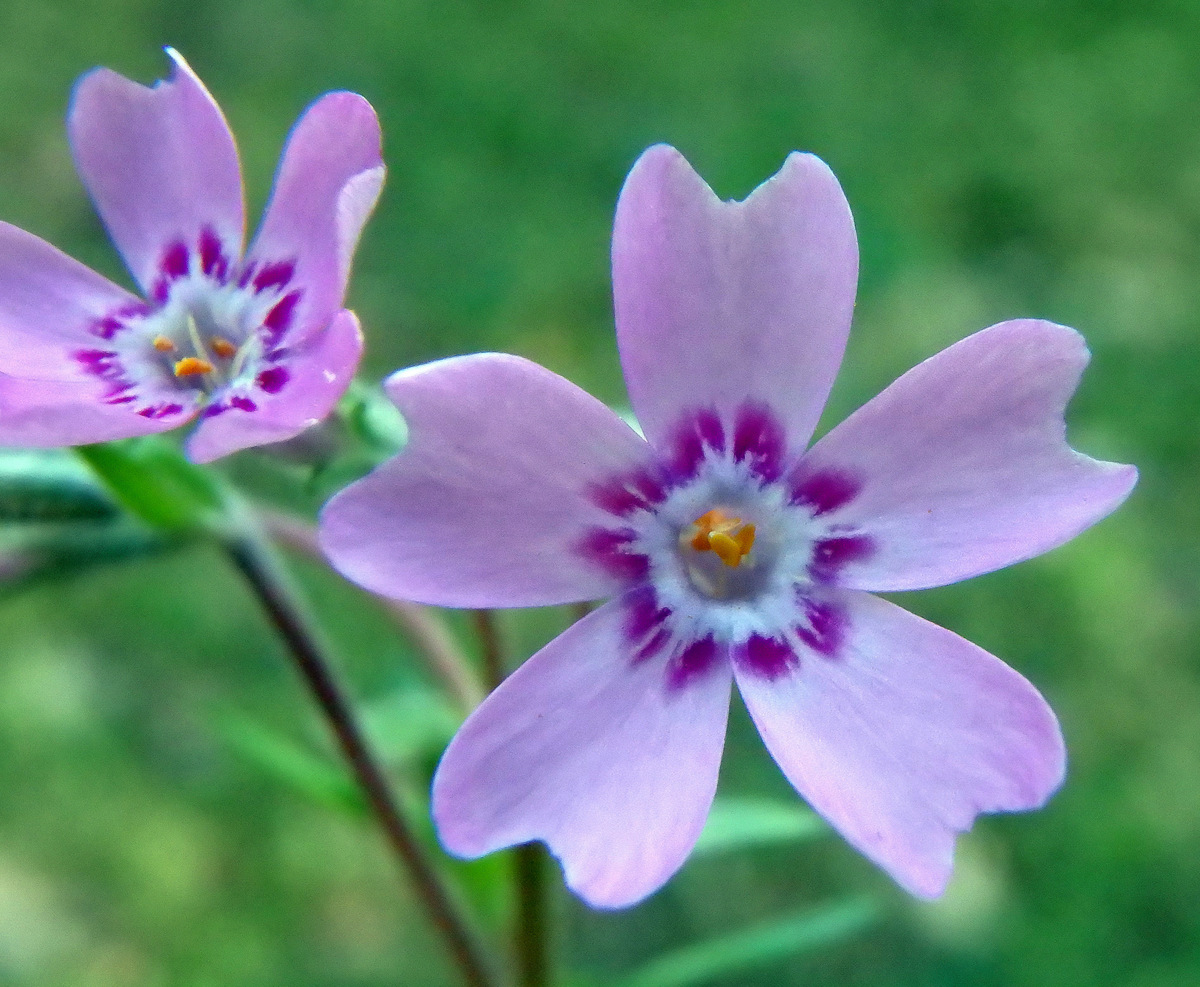
Well here it is, Saturday again already. Since last Saturday I’ve been here and there visiting a few old friends, many of which are quite rare, like the beautiful wild columbine shown above. I hope readers realize that when I say rare I mean rare to me; in my own experience, and a few of the plants in this post are like that. For all I know there could be fields of thousands of columbines just a few miles away but in my experience this small colony on some ledges in Westmoreland is the only one I’ve ever seen after 50+ years in these woods. I always imagine I hear someone out there saying “Rare? Those aren’t rare.” so I just wanted to clear that up. Usually when I say a plant is rare that means I’ve found it only in one or two places.

And this one is exceedingly rare, because this single blue cohosh plant is the only one I’ve ever seen. The bluish cast of the stems, flower buds, new spring shoots, and sky blue fruit all point to the blue in its name. The word “cohosh” comes from either the Abenaki or Penobscot Native American tribes. It is said to mean “rough” but I think its true meaning has been lost to the ages because it is used as a name for several different plants. The plant was once also called “papoose root” because of the way Natives used it to help in childbirth, but the latest reseach shows it should not be used in this way because it can induce miscarriage.

Each of the yellow green striped sepals of a blue cohosh flower contains a nectar gland to attract insects. Six yellow stamens (sometimes fewer) form a ring around the center ovary and the true petals are the shiny green parts that ring the center between the sepals and the stamens. It’s an unusual flower that is hard to mistake for anything else. When you find this one you know immediately that you’ve found something rare.

Dwarf ginseng is another rare plant that I’ve found in only tw places. The colony in this photo has gone from two or three plants several years ago to what you see here. Each single plant is small enough to fit into a teacup, and each spherical flower head is only about 3/4 of an inch across. This is not the same ginseng that herbalists use, so it should never be picked.

Wild ginger is rare enough in my experience that I have seen just the single colony that contains the plant seen here. I saw it in a garden once as well, but just once in the wild. The soft, heart shaped, matte finish leaves with their hairy stems are hard to mistake for any other spring blooming plant. Do you see the brown, cup shaped blossom in this photo?

This is the blossom which was down in the lower right in the previous shot. It’s a little odd as flowers go and though it’s easy enough to think they do the job I’ve never come back to look for seed pods, so for all I know this large colony of plants might have come about vegetatively with runners, sort of like strawberries. The flowers have no petals; they are made up of 3 triangular calyx lobes that are fused into a cup and curl backwards. Reproductive parts are found in a central column inside. Because they grow so close to the ground and bloom so early scientists once thought that wild ginger flowers must be pollinated by flies or fungus gnats, but they have been discovered to self-pollinate and are said to produce 6 seeds per flower. I’ll have to go back and see if I can find a seed pod to show you.

You might walk past a plant with hardly a glance, get a few yards further on down the trail and then stop, wondering “did I just see stripes?” So you go back, looking carefully for something with stripes. Finally, there it is; a Jack in the pulpit flower. Peering inside you see Jack, but you also see beautiful zebra stripes.

Carefully you open the hood of the spathe and see the spadix (Jack) and the beautiful stripes. But wait, you might wonder, “why are the stripes bolder on the inside than on the outside?” Since the plant emits a fungus like odor and is pollinated by tiny fungus gnats, the stripes aren’t insect guides. So why are they there? Maybe they’re there just to get you to stop and admire them. Maybe they’re there to get you to think like a child again and to remember how it was to live in a world full of wonder, where everything was new and happiness came in this instant, not some day. Maybe a simple thing like a flower can show you how, when you welcome each instant as it happens, life becomes full of joy and wonder, and beauty and love. Maybe flowers can do these things. Maybe they can even lead you back to yourself by reflecting the stillness and beauty that is there inside of you.

Nodding trillium is another plant you might walk right by, seeing the leaves and thinking it was too bad this trillium wasn’t blooming. But look a little closer, under the leaves, and there you find a single small white flower pointed at the ground, like a mayapple blossom.

And this flower has six delicious looking, plum colored anthers. These plants are relatively rare in this area. A friend gave me a tip a few years ago about a place that had a small colony of maybe a dozen plants, and that’s all I’ve ever seen. They bloom just as the red trilliums end and just before painted trilliums bloom. Nodding trilliums are also called whip-poor-will flowers because they bloom when the whip-poor-wills return in spring. They like to grow near rivers, and I’d guess probably streams and ponds as well.

Seeing buds breaking is one of the things I most look forward to in spring. Beech bud break is always especially beautiful and this spring they didn’t fail to amaze. See how they unfold themselves like an accordian from what was once a tiny bud. Once out of the bud the new leaves grow very quickly and lose their downy, silvery hairs before melting into the green of the forest. For just a short time they are like the wings of angels.

It might be accurate to say that I’ve seen millions of oak leaves in a life of 60+ years, but why I’ve never seen them wear neon colors like these is a mystery. They were very beautiful, as only new spring leaves can be. I’m always amazed by how beauty like this is everywhere you care to look. But you have to stop and look, and then you have to see.

Spring leaves wear unusual colors to keep sunlight from damaging them. These little oak leaves wear red, and not only do the have a color to protect them, they also have a velvety coat as well. Fully protected, they grow on until they can take the bright sunshine and slowly they’ll lose their velvet coat, turn green and begin to photosynthesize.

Oak leaves especially, are among the most colorful of new spring leaves but they’re small and easy to miss. They are part of the softness of spring, and I believe they help give nature its expressionist painting appearance at this time of year. It’s all softness, color, and light, and it’s beautiful.

Something that is not small and easy to miss is bud break on a shagbark hickory tree. I’m always surprised by how colorful the bud scales are. They look like flowers but like a Jack in the pulpit spathe, all the color is on the inside where nobody can see it until they burst open, as this one has. Seeing a tree full of these you might easily think you were seeing a tree full of beautiful flowers, but they’re often quite high up in the tree and it’s hard to tell. The reason I can see these buds so easily is because the beavers cut the trees back every few years, so the new branches are closer to the ground. Seeing them so close doesn’t detract from the peace found there along the river. They add to it, like a whispered exclamation of joy.

Things seem to be happening slowly this spring. I still haven’t seen any ripe red maple seeds twirling down out of the trees yet. That’s fine though, because they’re beautiful as they ripen on the trees.

A red winged blackbird sat on a cattail, singing a song of joy. Though this view was tame these robin size birds can be fierce. I’ve stumbled into their nesting sites before and suddenly found a male bird hovering right in front of my face, beating its wings so fast their sound was all I could hear. It’s always enough to make me turn and go back the way I came, which of course is just what the bird wants. They have a way of speaking to you that quickly drives home the point.

A female red winged blackbird eyed me warily from the top of a cherry tree. They nest in last year’s cattails at the edge of the water and fly away from the nest as soon as they hear you. And they have amazing hearing.

Shin high sweet vernal grass is usually one of the first grasses to bloom in spring. The feathery white filaments seen here are its beautiful female flowers. Smelling it reminds you of fresh cut hay with a bit of vanilla mixed in, and for that reason it is also called vanilla grass. I’ve read that its scent comes from the same substance that gives sweet woodruff its fragrance. You can dry sweet woodruff and put it in a drawer with your clothes to make them smell sweet but I don’t know if it would work with sweet vernal grass. It might be worth a try, but I could end up smelling like a bale of hay. That wouldn’t be all bad though, I don’t suppose. It certainly wouldn’t be the first time.

Meadow foxtail grass can fool you because from a distance its shape and its flowers look much like Timothy grass, which blooms later on in mid June. A closer look reveals the truth; this grass is rough and coarse, while Timothy is quite fine. Both are beautiful when they blossom and both are non-native. Meadow foxtail, as shown by its spring bloom time, is a cool season grass from Europe and Asia. It is perennial and fussy about where it grows, preferring moist, fertile, neutral soil. In this country it is useful as pasture hay, just like Timothy. I love its easily seen purple flowered beauty on walks.

Poison ivy has grown its beautiful spring leaves and as this photo shows, it isn’t long before the tiny flower buds appear as well. I haven’t gotten a rash from it yet this year but I’m sure I will because I get it every year. It’s very easy to see something beautiful and without thinking kneel down to get a shot of it. Then as you stand up you notice that you’ve been kneeling in poison ivy. It happens every year but luckily I’ve never been super allergic to it. I’ll get it on my knees or hands and it will stay there without spreading. Some aren’t so lucky.

Bees have been busily foraging on all the dandelions and if the pollen grains seen on this one are any indication, their work has been successful. Actually, you don’t really even need to see a bee; all the dandelion seeds being blown around by the wind tell the story.

The seed head of a dandelion is sometimes called a clock, because how many puffs it takes you to blow all the seeds away is supposed to equal the time of day. Dandelion seeds are bristly where they attach to their round receptacle so it can take quite a few puffs. Above the seed is a thin, hollow tube called a beak, and above that is a “parachute” made of even thinner hairs, called the pappus. When still fresh but empty of seeds, the round, pillow like receptacle is full of dimples that show where the seeds were attached. The dimples spiral outward from the center, and the pattern the spiral makes is known as a fractal. In a nutshell fractals are never ending patterns, and nature is full of them. They appear in pinecones, ferns, snowflakes, forests, river deltas, galaxies, and just about everything I see. They’re very beautiful and nature uses them to efficiently fill a given space. Note how so many seeds can sit on the receptacle without touching one another. This means each seed can blow away freely without disturbing its neighbor when its turn comes.

A pretty little yellow warbler landed in a poplar tree and seemed to want its photo taken. It was quite small and was a challenge for my old camera. I knew it wasn’t a goldfinch but I don’t “do” birds due to color blindness so I only knew what it wasn’t. Luckily a friend who is a lifelong birder happened along and told me what it was when I showed him the photo. Though I often have trouble seeing birds thankfully I’ve never had any trouble hearing them. And now, with a phone app called Merlin I can finally identify what I’m hearing. One day I stood and listened to two rose breasted grosbeaks have a conversation. First the one nearby would sing its beautiful song and then another bird far off would sing a similar song. It was a beautiful thing to hear, and now I know what I was hearing.

Birch trees are not rare in this area, but I thought the sunlit white trunks of these young trees were beautiful against the varying shades of green. The word birch comes from the root word bhereg, which means “to shine, bright, white,” and of course that’s just what they do.
I meant to do my work today, but a brown bird sang in the apple tree, and a butterfly flitted across the field, and all the leaves were calling. ~Richard le Gallienn
Thanks for coming by. Have a great week.




































































































































































































